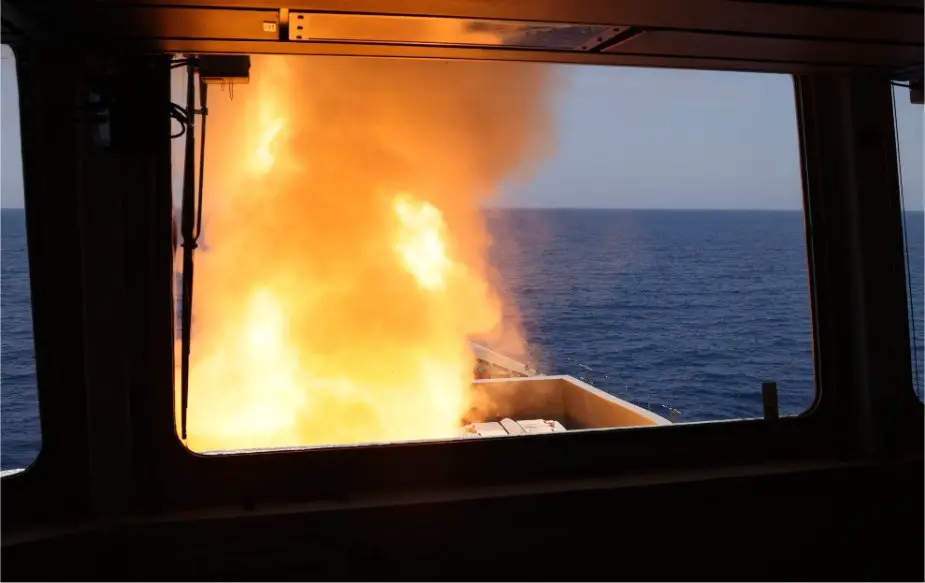Breaking news
UK: Royal Navy destroyer successfully destroys Houthis missile with Sea Viper.
According to information published by the UK MoD on April 27, 2024, HMS Diamond, a Type 45 destroyer of the Royal Navy, utilized its Sea Viper missile system to intercept and destroy a missile launched by Houthi forces.
Follow Navy Recognition on Google News at this link
 Royal Navy's Type 45 destroyer HMS Diamond firing Aster missile. (Picture source: UK MoD)
Royal Navy's Type 45 destroyer HMS Diamond firing Aster missile. (Picture source: UK MoD)
HMS Diamond, a Type 45 destroyer, incorporates an Integrated Electric Propulsion (IEP) system featuring two Rolls-Royce WR-21 gas turbines and two Wärtsilä 2 MW diesel generators. This propulsion system allows the ship to reach speeds greater than 30 knots, showcasing its capability for rapid deployment in various naval tasks.
The ship utilizes the Sampson radar, an advanced multifunctional radar system characterized by its electronically steered arrays that enable quick beam positioning essential for monitoring multiple fast-moving targets. This radar system efficiently identifies and ranks potential threats based on speed, trajectory, and type. In its operational role, the Sampson radar also transitions from detection to missile guidance, facilitating missile interceptions by swiftly switching to fire control mode upon threat classification.
HMS Diamond is equipped with a 4.5-inch Mk 8 naval gun, two 30mm DS30M automated guns, and a Phalanx Close-In Weapon System (CIWS) for immediate threat engagements. It also houses facilities to support two Lynx Wildcat or Merlin helicopters, enhancing its versatility in various operational scenarios.
The deployment of the Sea Viper missile system against drone threats has led to discussions on the cost-effectiveness of using such high-end missiles for relatively inexpensive drones. The Sea Viper system, designed primarily for combating advanced manned aircraft and ballistic missiles, has been scrutinized for its application against simpler unmanned aerial vehicles (UAVs).
This has prompted considerations for more economically viable and efficient defense strategies, possibly involving electronic warfare tactics, laser defense systems, or specialized anti-drone missiles to more sustainably manage lower-level threats.




























